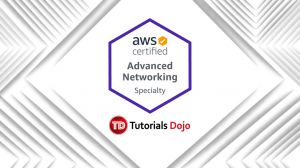Last updated on June 23, 2023
AWS Transit Gateway Cheat Sheet
- A networking service that uses a hub and spoke model to enable customers to connect their on-premises data centers and their Amazon Virtual Private Clouds (VPCs) to a single gateway.
- With this service, customers only have to create and manage a single connection from the central gateway into each on-premises data center, remote office, or VPC across your network.
- If a new VPC is created, it is automatically connected to the Transit Gateway and will also be available to every other network that is also connected to the Transit Gateway.
Features
- Inter-region peering
- Transit Gateway leverages the AWS global network to allow customers to route traffic across AWS Regions.
- Inter-region peering provides an easy and cost-effective way to replicate data for geographic redundancy or to share resources between AWS Regions.
- Multicast
- Enables customers to have fine-grain control on who can consume and produce multicast traffic.
- It allows you to easily create and manage multicast groups in the cloud instead of the time-consuming task of deploying and managing legacy hardware on-premises.
- This multicast solution is also scalable so the customers can simultaneously distribute a stream of content to multiple subscribers.
- Automated Provisioning
- Customers can automatically identify the Site-to-Site VPN connections and the on-premises resources with which they are associated using AWS Transit Gateway.
- Using the Transit Gateway Network Manager, you can also manually define your on-premises network.
Note: If you are studying for the AWS Certified Advanced Networking Specialty exam, we highly recommend that you take our AWS Certified Advanced Networking – Specialty Practice Exams and read our Advanced Networking Specialty exam study guide.
Validate Your Knowledge
Question 1
A multinational bank has two data centers that are 60 miles (96.56 kilometers) from each other. The bank also has a single transit gateway that has multiple VPC and VPN attachments.
The Network team recently established two AWS Direct Connect connections from the company’s on-premises data centers to a Direct Connect location with the help of a local Direct Connect Partner. Afterward, they provisioned an AWS Direct Connect Gateway that connects to the AWS Direct Connect location via a transit virtual interface.
With this setup, what other network connections can be implemented? (Select TWO.)
- Connect multiple VPCs in the same or different AWS account using the Direct Connect connection.
- Associate multiple transit gateways in different AWS Regions to the Direct Connect Gateway and use the same ASNs for each transit gateway. Enable the Appliance mode for all transit gateways.
- Allow on-premises servers to connect to AWS resources that are reachable via public IP addresses such as AWS public endpoints and S3 buckets. Configure the Appliance mode on the existing transit gateway.
- Use equal-cost multi-path routing (ECMP) to get higher VPN bandwidth by aggregating multiple VPN connections in different AWS Regions.
- Associate multiple transit gateways in the same AWS Region.
For more AWS practice exam questions with detailed explanations, visit the Tutorials Dojo Portal:
AWS Transit Gateway Cheat Sheet Reference:
https://aws.amazon.com/transit-gateway/























